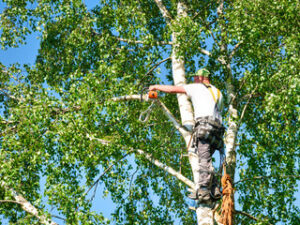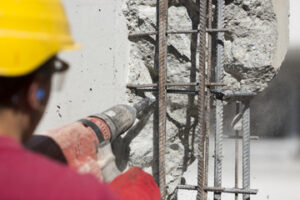SEO involves optimizing webpages to help search engines find and understand them. This includes using keywords in the content and making sure pages are well-structured and load quickly.

Search engines like Google analyze billions of webpages and store them in an index. When you perform a search, the engine retrieves the most relevant indexed pages to show you as your top results. Contact Billboards In Houston for professional help.
On-page optimization is the process of optimizing a web page’s content for search engines. This includes incorporating relevant keywords, title tags, and meta descriptions. It also includes ensuring that the content is both informative and up to date. This is different from off-page optimization, which involves leveraging external signals such as backlinks and social media mentions to improve a site’s ranking.
In order to be successful in online marketing, marketers need to understand how search engine algorithms work. This helps them identify and target specific user intents and deliver appropriate search results. In addition, it is important to avoid using practices that violate search engine guidelines. For example, keyword stuffing and cloaking are both violations that can result in penalties by search engines.
While on-page optimization is no longer as simple as it once was, it is still an important part of any SEO strategy. Search engines are much smarter today and can extract a page’s meaning from many different factors, including synonyms and context. As a result, traditional prescriptive methods such as using an exact-match keyword in the title tag and body text a requisite number of times are no longer a major factor. Instead, on-page optimization should focus on relevance.
Another important on-page optimization technique is to optimize the URL. This is important because it is one of the first things a user or search engine sees when visiting a website. The URL should clearly describe the contents of the page and include a keyword. It is also important to use hyphens rather than underscores.
It is also important to optimize the images on a website. This is because image search is becoming increasingly popular. Optimized alt text is important because it enables the search engine to better understand an image’s content. Moreover, it is also helpful for users who are visually impaired.
Finally, on-page optimization should include the structure of a website’s navigation and architecture. The aim is to make it easy for a search engine to crawl and index all pages. The number of levels in a website hierarchy should be limited. Similarly, duplicate content should be avoided, both to prevent duplicate indexing and to minimize the amount of time a user must spend to find what they are looking for.
Off-page optimization
Off-page optimization is a vital part of any SEO strategy. It helps search engines determine a website’s relevance and authority. It also involves activities outside the website, like reaching out to publishers for backlinks. This is a critical step in increasing your organic visibility, but it can be time-consuming.
There are many different ways to improve your off-page optimization, including guest blogging, social media promotion, and manual outreach. You can also use an off-page SEO tool to find opportunities for link building. The tool will show you your incoming links, referring domains, anchor text, and more. It can help you identify the most effective strategies and save you time.
What Is the Difference Between On-page and Off-page Optimization?
The term off-page SEO describes all the activities that happen outside of a website. This includes link building, local citations, and online reviews. It’s an important part of any SEO strategy, and it can have a huge impact on your rankings. However, off-page SEO is less controllable than on-page SEO.
Off-page optimization focuses on building backlinks and improving the quality of existing ones. It can take a long time to build high-quality, relevant backlinks, and it can be difficult to maintain them. However, the results can be worth it. A site with many quality backlinks is more likely to rank higher in search engine results pages than a similar site with few or no backlinks.
In addition to improving a website’s organic visibility, off-page optimization can also increase its brand awareness and user trust. By gaining valuable links from other websites, a business can establish itself as an expert in its industry. Ultimately, this can lead to more conversions and sales.
Off-page optimization is an integral part of any SEO strategy, but it’s important to balance your efforts between on-page and off-page. On-page SEO includes activities that happen within a website, such as optimizing title tags and meta descriptions. Off-page SEO encompasses all other activities, such as pursuing backlinks and building social media presence. Both are necessary for a successful online marketing campaign. However, most experts recommend focusing on on-page optimization before moving onto off-page SEO.
Link building
Link building (LGB) is a strategy that marketers use to get links to their content. These links help boost their search engine rankings. There are many different methods to build links, but it is important to do it the right way. It is best to avoid “shortcuts” such as buying links or using other manipulative tactics. These tactics are referred to as black-hat SEO and can lead to penalties from Google. Instead, focus on creating quality content and building relationships with other websites.
A website’s authority and relevance are based on the number of quality backlinks it has. These links can be either external or internal. Internal links are the links that point to pages within your site, while external links are the links from other sites that point to your page. The more high-quality links a page has, the higher it will rank in the search engines.
One of the best ways to build links is through guest posts on other websites. However, it is important to remember that the quality of a guest post depends on the relevance of the topic and the value added by the author. You can also build links by promoting your content on social media and getting listed in local directories. These strategies can be time-consuming, but they can pay off in the long run.
Besides boosting your search engine ranking, link building can also improve brand awareness and increase the visibility of your products or services. It can also help you build a community around your brand, which in turn will enhance your credibility and reputation. Using tools like Moz’s Link Explorer can help you find opportunities for link building and identify competitors’ link building strategies.
Getting links to your web page is an essential part of any digital marketing strategy. In fact, it is the most important element in determining your search engine ranking. A good rule of thumb is to have a target of 100 to 250 links from authoritative sites. This will ensure that your pages are considered to be relevant and valuable by search engines.
Content creation
Content creation (CGC) is the process of developing entertaining or educational material for any medium or channel. This includes blogs, social media posts, brochures, digital marketing materials, newsletters, and even annual reports. It is an important strategy for companies that want to engage with their audience and drive sales.
Content should be engaging, relevant, and valuable to your target market. This means identifying what they care about, and how this aligns with your business. It also means creating calls to action that encourage your audience to take the next step, like purchasing a product or subscribing to an email list.
A successful content creation strategy should be both informative and entertaining, with a strong emphasis on user-generated content (UGC). This type of content is often shared organically, and it can help increase the visibility of your brand. UGC is also great for building trust and loyalty, which leads to long-term success.
Getting started with content creation can be difficult, but there are a few things you can do to streamline the process and make it more efficient. First, start by making a list of keywords associated with your product or service. Then, use a tool such as Topic Research to identify related keyword trends and content formats. Once you have a few ideas, create a content calendar to track your progress and ensure consistency.
Another way to improve the efficiency of your content creation process is by using SEO tools to optimize your website. This will help improve search engine ranking, and will allow you to focus on generating quality leads.
Finally, be sure to analyze your content’s performance after it goes live. This will help you understand how well it is performing compared to your goals, and what needs to be improved. This will help you make more informed decisions about your content strategy in the future. For example, if your content isn’t performing well, consider reworking it to improve the user experience. Alternatively, you could update old content to include more information about your product or service. You might also want to include more links in your content to boost your credibility and authority.








